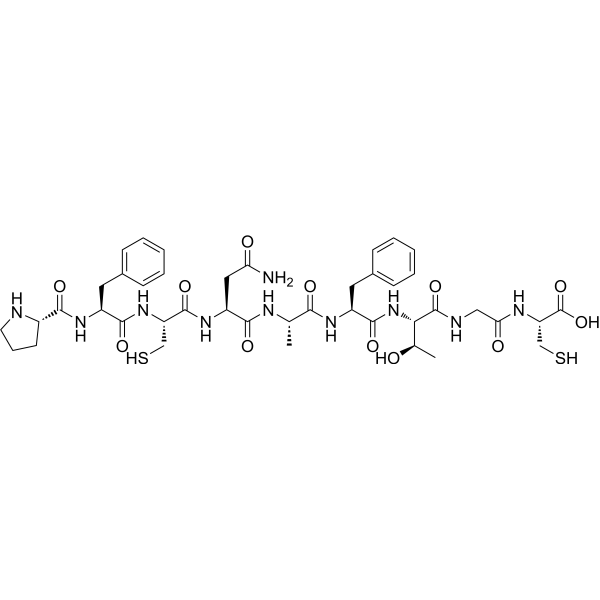Search Result
Results for "
neuronal activity
" in MedChemExpress (MCE) Product Catalog:
11
Isotope-Labeled Compounds
| Cat. No. |
Product Name |
Target |
Research Areas |
Chemical Structure |
-
- HY-116797
-
|
MS0015203
|
GPR171
|
Metabolic Disease
|
|
MS15203 is a potent and selective GPR171 agonist. MS15203 increases food intake and body weight. MS15203 increases neuronal activity. MS15203 significantly increases the abundance of the mRNAs encoding proSAAS, NPY, AgRP .
|
-
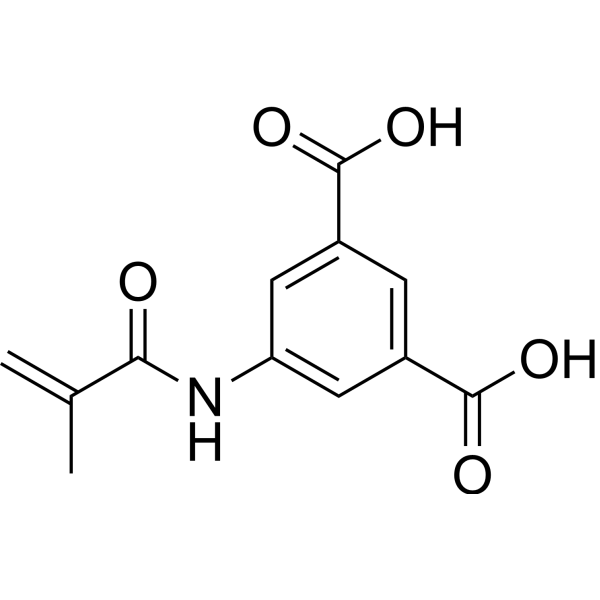
-
- HY-D1427
-
|
|
Fluorescent Dye
|
Neurological Disease
|
|
Di-2-ANEPEQ is a voltage sensitive membrane potential fluorescence dye. Di-2-ANEPEQ can be used for the evaluation of voltage-sensitive fluorescence dyes for monitoring neuronal activity in the embryonic central nervous system .
|
-
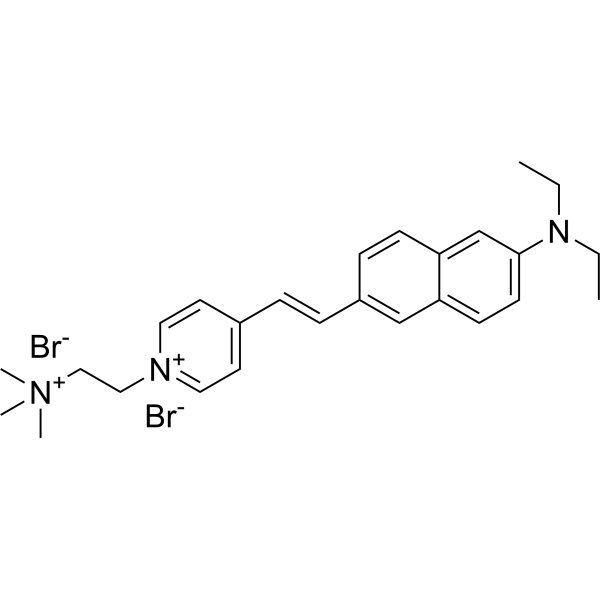
-
- HY-118645
-
|
|
Drug Metabolite
|
Neurological Disease
|
|
1'-Hydroxymidazolam is a primary active metabolite of Midazolam, and it is a neuronal depressant agent. 1'-Hydroxymidazolam could inhibit neuronal activity add to the effects of Midazolam .
|
-
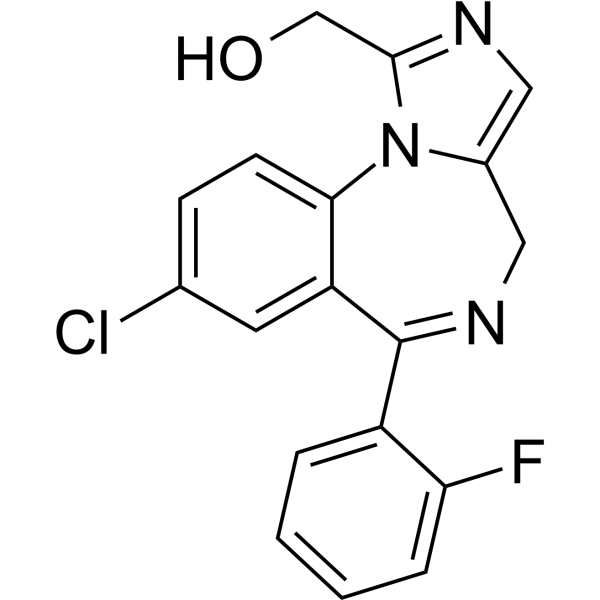
-
- HY-13047
-
|
Dexmecamylamine hydrochloride; TC-5214 hydrochloride
|
nAChR
|
Neurological Disease
|
|
S-(+)-Mecamylamine (hydrochloride) is a neuronal nicotinic receptor modulator with antidepressant activity.
|
-
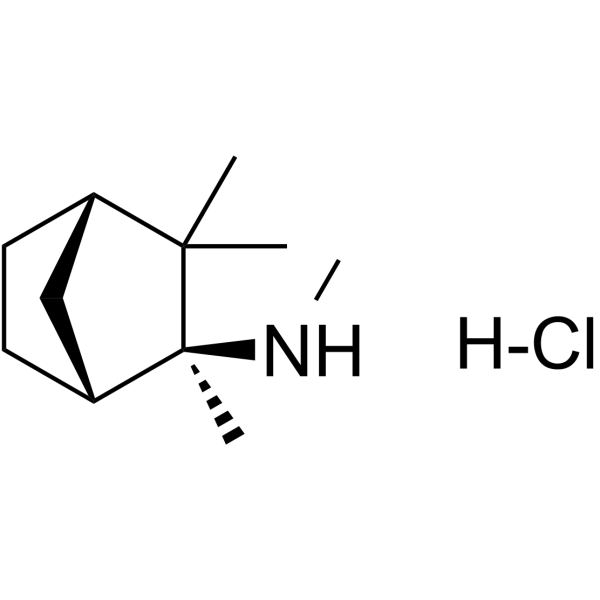
-
- HY-103563
-
|
|
Others
|
Neurological Disease
|
|
3-MATIDA is a metabolic glutamate 1 (mGlu1) receptor antagonist. 3-MATIDA alleviates neuronal death in cerebral ischemia models. 3-MATIDA can be used in the study of neuronal injury and epileptiform activity after ischemia .
|
-
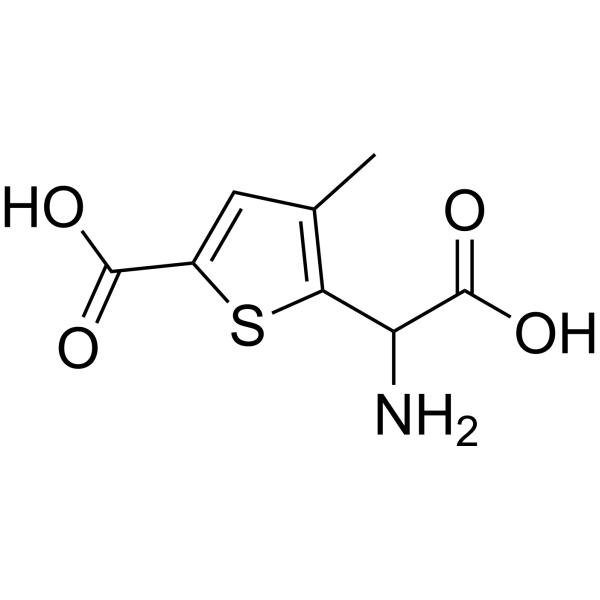
-
- HY-118645S
-
|
|
Drug Metabolite
|
Neurological Disease
|
|
1'-Hydroxymidazolam-d4 is the deuterium labeled 1'-Hydroxymidazolam. 1'-Hydroxymidazolam is a primary active metabolite of Midazolam, and it is a neuronal depressant agent. 1'-Hydroxymidazolam could inhibit neuronal activity add to the effects of Midazolam[1][2].
|
-
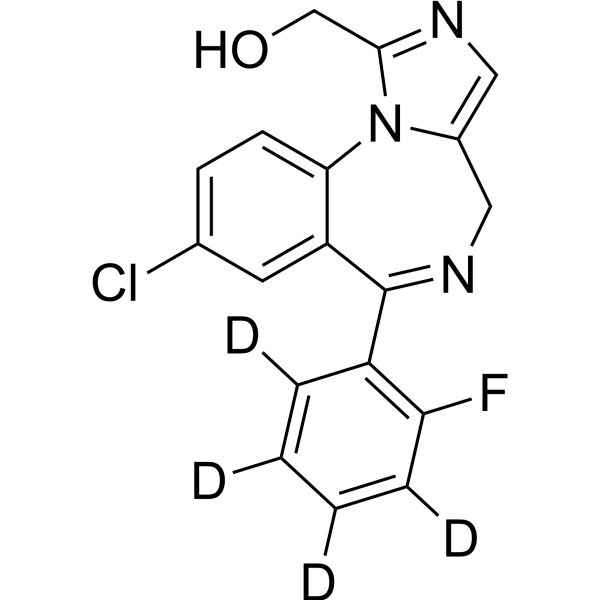
-
- HY-118645S3
-
|
|
Isotope-Labeled Compounds
|
Neurological Disease
|
|
1'-Hydroxymidazolam- 13C6 is 13C- and 15N-labeled 1'-Hydroxymidazolam (HY-118645). 1'-Hydroxymidazolam is a primary active metabolite of Midazolam, and it is a neuronal depressant agent. 1'-Hydroxymidazolam could inhibit neuronal activity add to the effects of Midazolam .
|
-
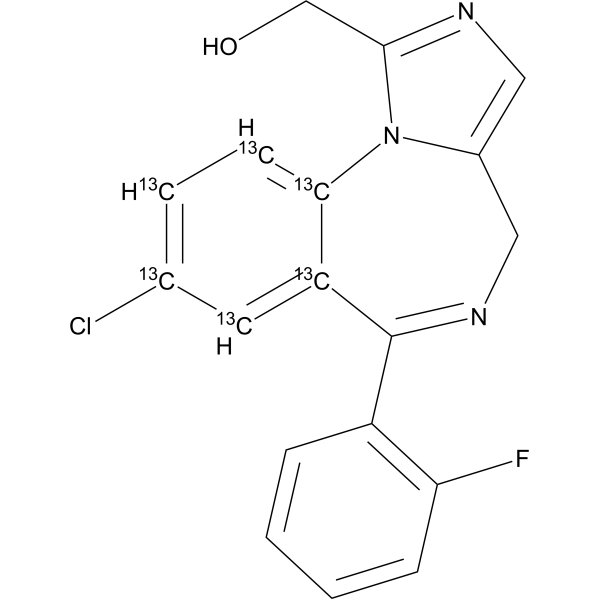
-
- HY-13694
-
-
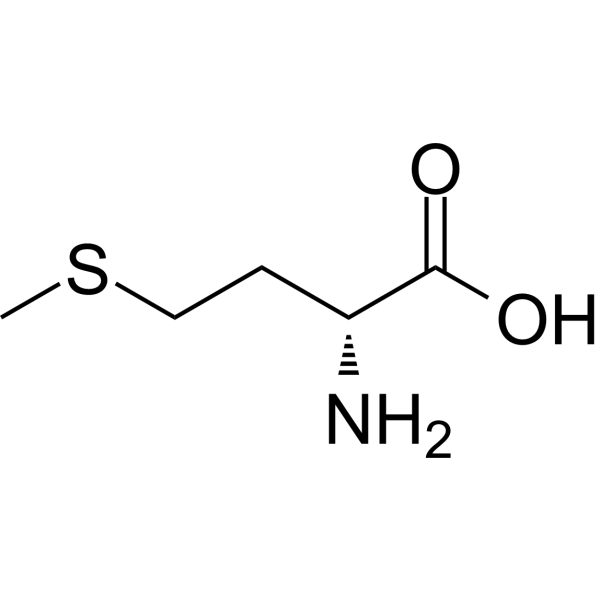
-
- HY-N0812
-
-

-
- HY-14316A
-
|
Ebanicline dihydrochloride; ABT-594 dihydrochloride
|
nAChR
|
Neurological Disease
|
|
Tebanicline dihydrochloride (Ebanicline dihydrochloride) is a nAChR modulator with potent, orally effective analgesic activity. It inhibits the binding of cytisine to α4β2 neuronal nAChRs with a Ki of 37 pM .
|
-
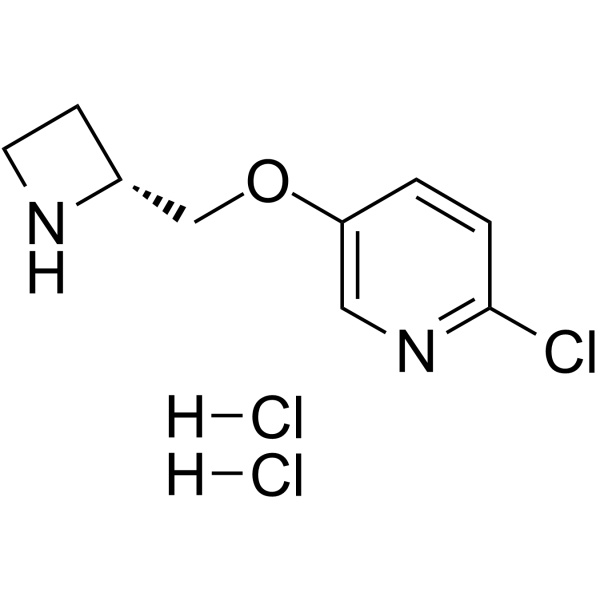
-
- HY-14316B
-
|
Ebanicline hydrochloride; ABT-594 hydrochloride
|
nAChR
|
Neurological Disease
|
|
Tebanicline hydrochloride (Ebanicline hydrochloride) is a nAChR modulator with potent, orally effective analgesic activity. Tebanicline hydrochloride inhibits the binding of cytisine to α4β2 neuronal nAChRs with a Ki of 37 pM .
|
-

-
- HY-13694S
-
-
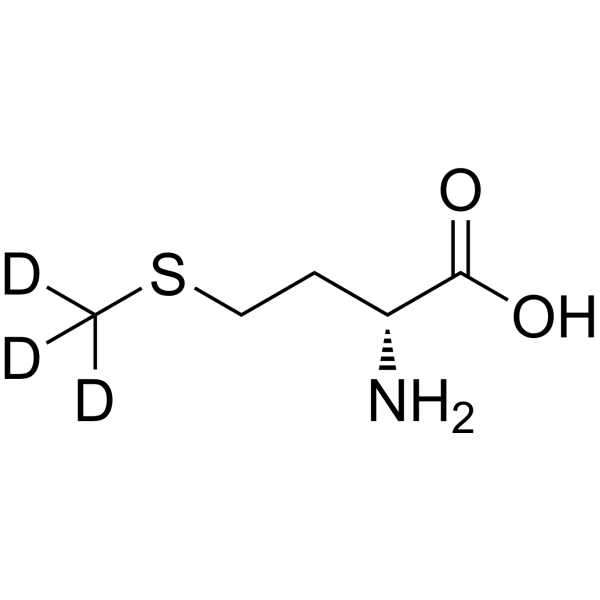
-
- HY-13694S1
-
|
MRX-1024-d4; D-Methionine-d4
|
GABA Receptor
Endogenous Metabolite
|
|
|
Methionine-d4 is the deuterium labeled Methionine. Methionine (MRX-1024; D-Methionine) is an effective chemoprotective agent which can also inhibit the neuronal activity through GABAA receptor activation.
|
-
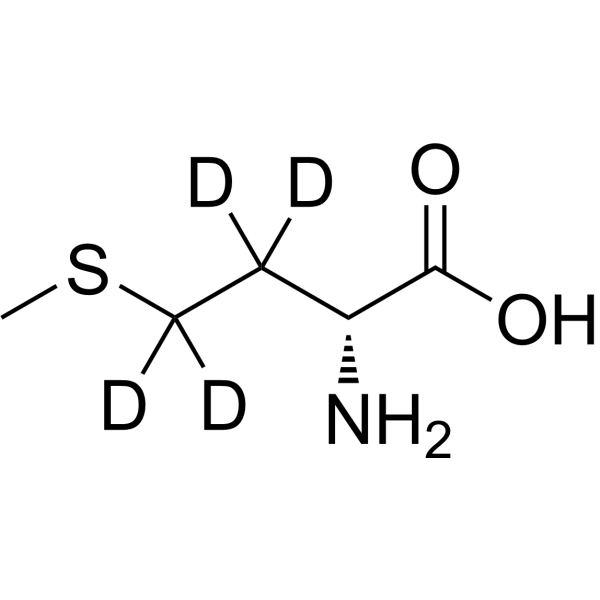
-
- HY-W014700
-
|
|
Cholinesterase (ChE)
|
Neurological Disease
|
|
Glycyl-L-glutamic acid is a neurotrophic factor (NF) in vivo, and exerts function of maintenance of AChE content and activity. Glycyl-L-glutamic acid doesn’t act directly on AChE synthesis, and may prevent preganglionic neuronal degeneration .
|
-
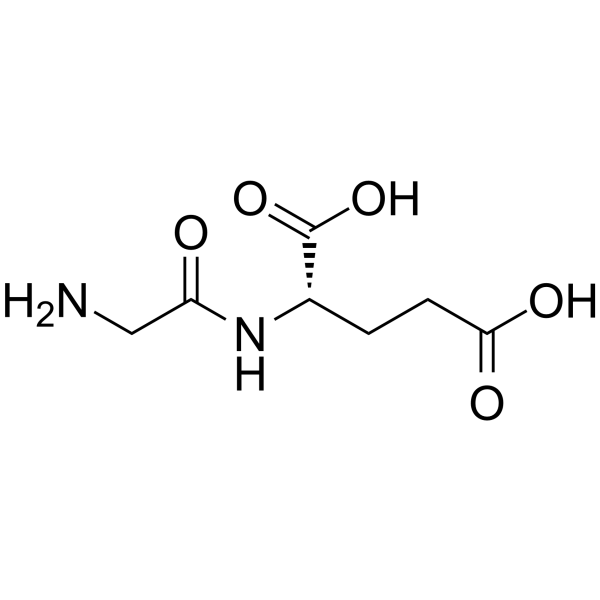
-
- HY-136146
-
|
|
nAChR
|
Neurological Disease
|
|
SUVN-911 is a potent, selective, brain penetrated and orally bioavailable neuronal nicotinic acetylcholine α4β2 receptor antagonist, with a Ki of 1.5 nM. SUVN-911 has antidepressant activity .
|
-
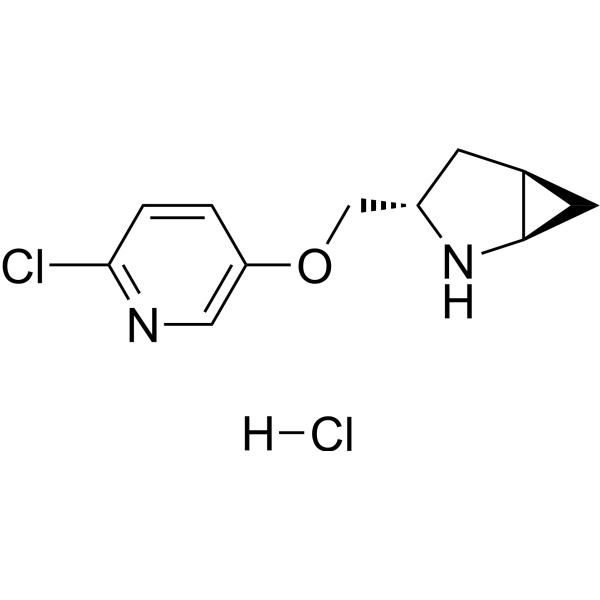
-
- HY-130285
-
|
10(S),17(S)-DiHDoHE; PDX
|
Endogenous Metabolite
|
Inflammation/Immunology
|
|
10(S),17(S)-DiHDHA (also known as neuroprotectin D1 when produced in neuronal tissues) is a DHA-derived dihydroxy fatty acid that exhibits potent protective and anti-inflammatory activities .
|
-
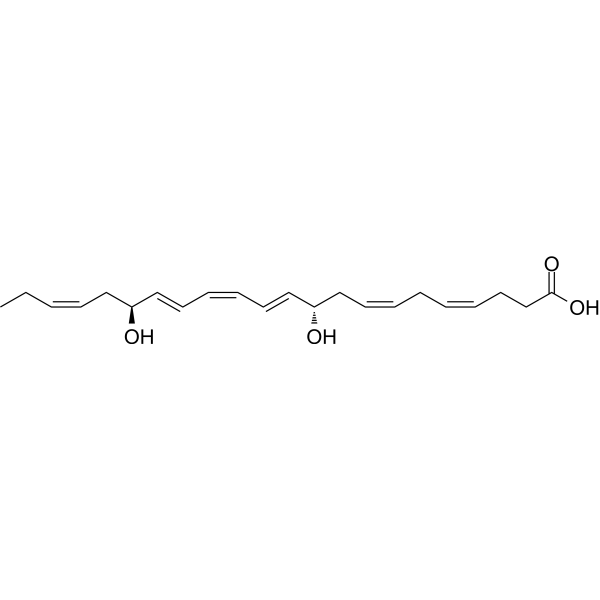
-
- HY-118461
-
|
|
Dopamine Receptor
|
Neurological Disease
|
|
PD 120697 is an orally active dopamine (DA) agonist. PD 120697 inhibits striatal DA synthesis, DA neuronal firing, spontaneous locomotor activity, and reverses Reserpine (HY-N0480)-induced depression .
|
-
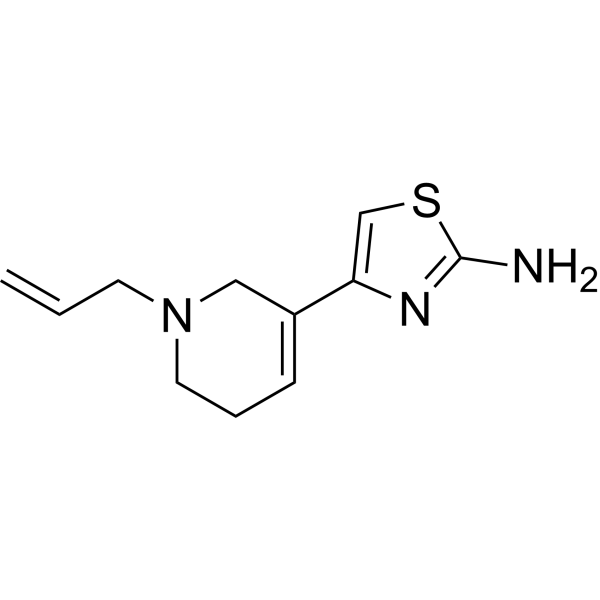
-
- HY-P5883
-
|
tatM2NX
|
TRP Channel
|
Neurological Disease
|
|
TAT-M2NX (tatM2NX) is a TRPM2 inhibitor with specific neuroprotective activity in male mice. TAT-M2NX can be used to study ischemic neuronal damage .
|
-

-
- HY-P1149
-
|
Epithalon; Epithalamin
|
Telomerase
|
Neurological Disease
Cancer
|
|
Epitalon is an anti-aging agent and a telomerase activator. Epitalon has an inhibitory effect of the on the development of spontaneous tumors in mice, has geroprotective actions and intranasal administration increases neuronal activity. Epitalon can be used for cancer, old age and Retinitis Pigmentosa .
|
-
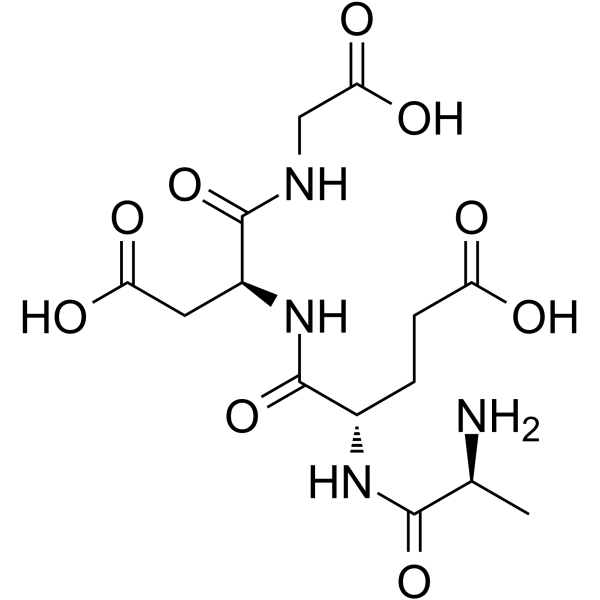
-
- HY-105182A
-
|
LY 246708 tartrate
|
mAChR
|
Neurological Disease
|
|
Xanomeline (LY 246708) is the potent agonist of muscarinic M1/M4 receptor with antipsychotic-like activity. Xanomeline (LY 246708) increases neuronal excitability. Xanomeline (LY 246708) can be used for the research of schizophrenia .
|
-
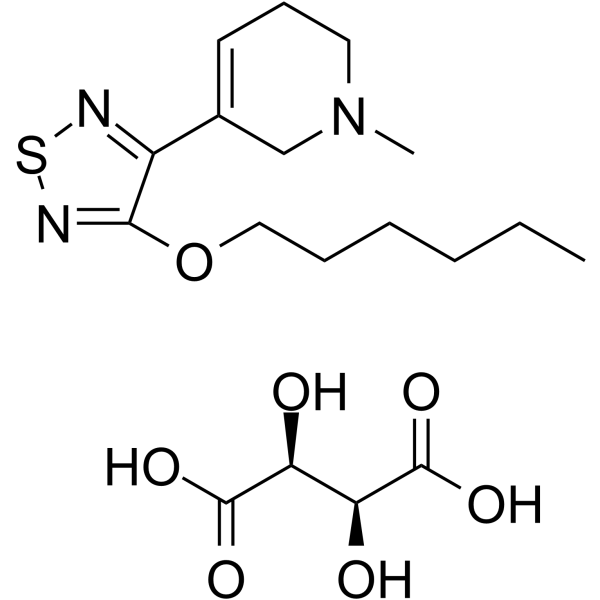
-
- HY-10965
-
|
KW-3902
|
Adenosine Receptor
|
Neurological Disease
|
|
Rolofylline (KW-3902) is a potent, selective adenosine A1 receptor antagonist that is under development for the treatment of patients with acute congestive heart failure and renal impairment.
Rolofylline is metabolized primarily to the pharmacologically active M1-trans and M1-cis metabolites by cytochrome P450 (CYP450) .
Rolofylline is alleviating the presynaptic dysfunction and restores neuronal activity as well as dendritic spine levels in vitro, is an interesting candidate to combat the hypometabolism and neuronal dysfunction associated with Tau-induced neurodegenerative diseases .
|
-
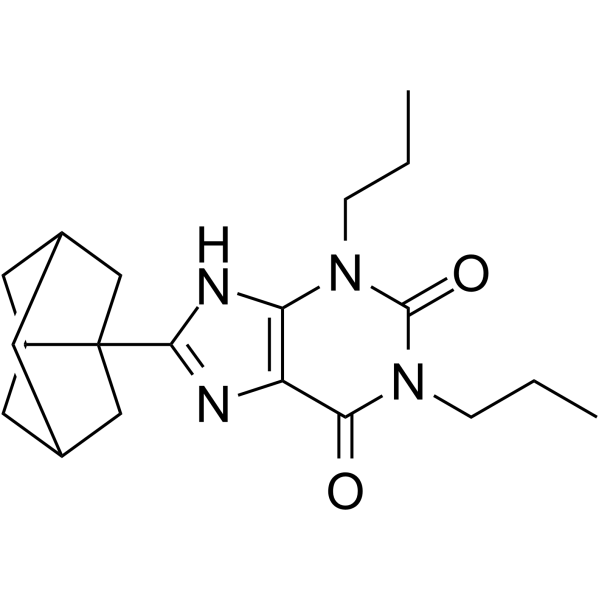
-
- HY-N9404
-
|
|
Sodium Channel
|
Neurological Disease
|
|
6-Benzoylheteratisine is an Aconitum alkaloid with potential neuroprotective activity. 6-Benzoylheteratisine can antagonize tetrodotoxin, inhibit the increase of [Na +]i, [Ca 2+]i and glutamate release, and block sodium channels. 6-Benzoylheteratisine has an inhibitory effect on the neuronal activity underlying epileptiform burst discharge .
|
-
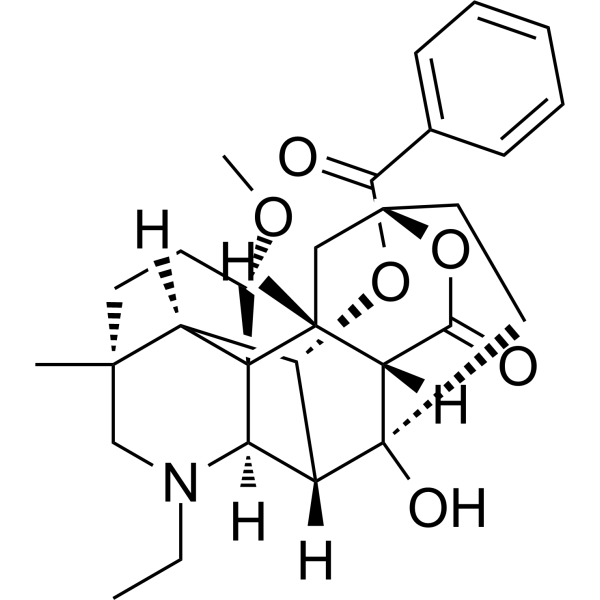
-
- HY-P1149A
-
|
Epithalon TFA; Epithalamin TFA
|
Telomerase
|
Neurological Disease
Cancer
|
|
Epitalon TFA is an anti-aging agent and a telomerase activator. Epitalon TFA has an inhibitory effect of the on the development of spontaneous tumors in mice, has geroprotective actions and intranasal administration increases neuronal activity. Epitalon TFA can be used for cancer, old age and Retinitis Pigmentosa .
|
-
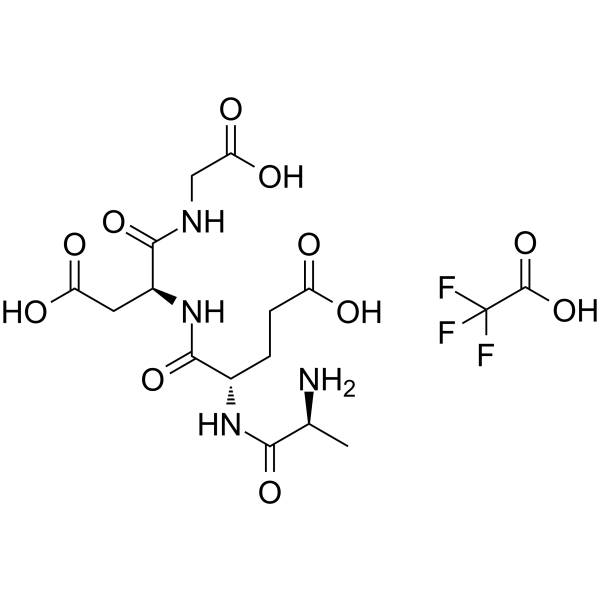
-
- HY-119961
-
|
Dexivacaine; (S)-Mepivacaine
|
Others
|
Cardiovascular Disease
|
|
(+)-Mepivacaine is a racemic isomer of Mepivacaine (HY-B0517), which has analgesic and vasoconstrictive activity. Mepivacaine is an amide type agent that temporarily causes local loss of consciousness. Mepivacaine binds to specific voltage-gated sodium channels on neuronal cell membranes, inhibiting sodium influx and membrane depolarization .
|
-
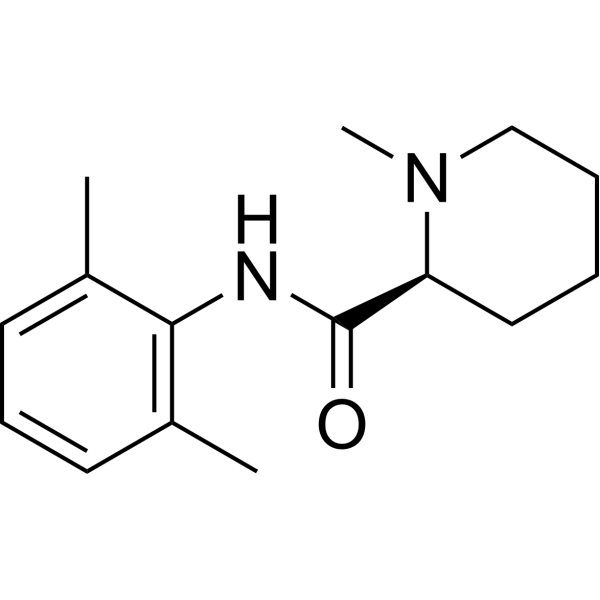
-
- HY-P1212
-
|
CST-14, human, rat
|
Somatostatin Receptor
|
Neurological Disease
|
|
Cortistatin 14, human, rat (CST-14, human, rat), a neuropeptide with neuronal depressant and sleep modulating properties, can bind to all five cloned somatostatin receptors (SSTRs) and ghrelin receptor to exert its biological activities and co-exists with GABA within the cortex and hippocampus .
|
-

-
- HY-12390
-
|
Lopramine
|
Others
|
Neurological Disease
|
|
Lofepramine (Lopramine) is a potent tricyclic antidepressant and is extensively metabolised to Desipramine. The antidepressant activity of Lofepramine stems from the facilitation of noradrenergic neurotransmission by uptake inhibition. Lofepramine may also potentiate serotoninergic neurotransmission by inhibition of the neuronal uptake of serotonin and the enzyme tryptophan pyrrolase. Lofepramine has significant anxiolytic efficacy in addition to its antidepressant properties .
|
-
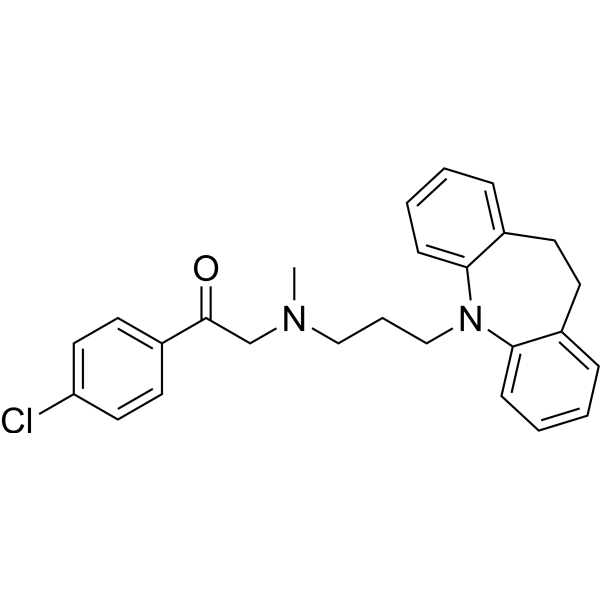
-
- HY-12390A
-
|
Lopramine hydrochloride
|
Others
|
Neurological Disease
|
|
Lofepramine (Lopramine) hydrochloride is a potent tricyclic antidepressant and is extensively metabolised to Desipramine. The antidepressant activity of Lofepramine hydrochloride stems from the facilitation of noradrenergic neurotransmission by uptake inhibition. Lofepramine hydrochloride may also potentiate serotoninergic neurotransmission by inhibition of the neuronal uptake of serotonin and the enzyme tryptophan pyrrolase. Lofepramine hydrochloride has significant anxiolytic efficacy in addition to its antidepressant properties .
|
-
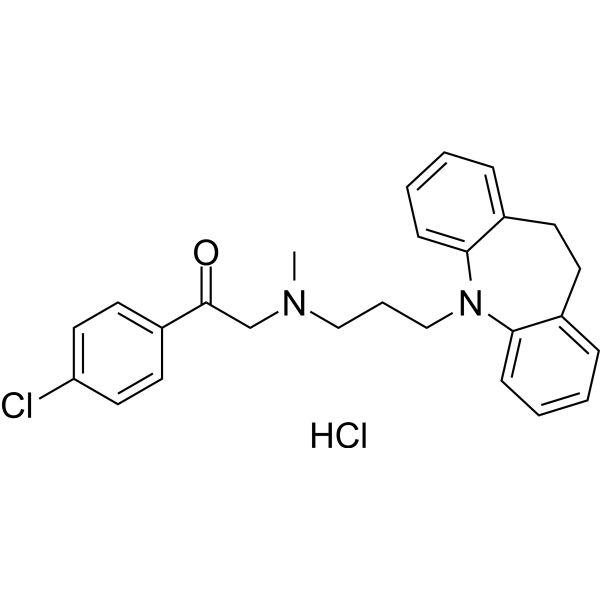
-
- HY-120229
-
|
|
ROS Kinase
|
Neurological Disease
|
|
GGTI-2147 is a potent GGTase I inhibitor. GGTI-2147 blocks geranyl-geranylation of Rap1A and reduces the activity of Rac1 (one of substrates for GGTI) and ameliorates the OGD/R-induced neuronal apoptosis.GGTI-2147 can be used for neurodevelopmental disorders research, such as autism, depression, and schizophrenia .
|
-
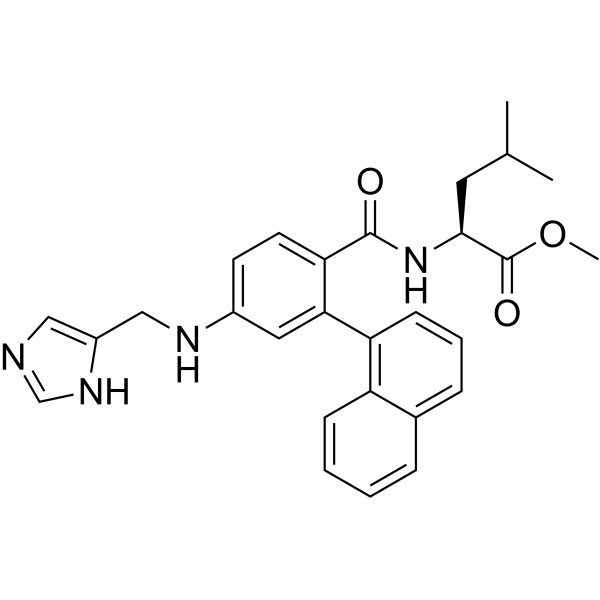
-
- HY-12394
-
|
Dosulepin; Dothep
|
Histamine Receptor
5-HT Receptor
|
Neurological Disease
|
|
Dothiepin (Dosulepin; Dothep) is an antidepressant agent with sedative/anxiolytic activity. Dothiepin is an inhibitor preferring of noradrenaline uptake than serotonin uptake. Dothiepin facilitates noradrenergic neurotransmission via inhibiting the neuronal uptake. Dothiepin is also an antagonist of histamine H1-receptor without cardiotoxicity. Dothiepin exhibits significant analgesic activity in psychogenic facial pain,idiopathic fibromyalgia syndrome or rheumatoid arthritis .
|
-

-
- HY-B0228
-
-

-
- HY-B0558
-
|
|
p38 MAPK
|
Neurological Disease
Endocrinology
|
|
Carbimazole is an orally active antithyroid agent which rapidly converts to Methimazole after absorption and prevents thyroid peroxidase enzyme from iodinating and coupling the tyrosine residues on thyroglobulin, hence reducing the production of thyroxine. Carbimazole also displays anti-inflammatory and neuronal-protective activities, suggesting its application for hyperthyroidism and neurological research .
|
-
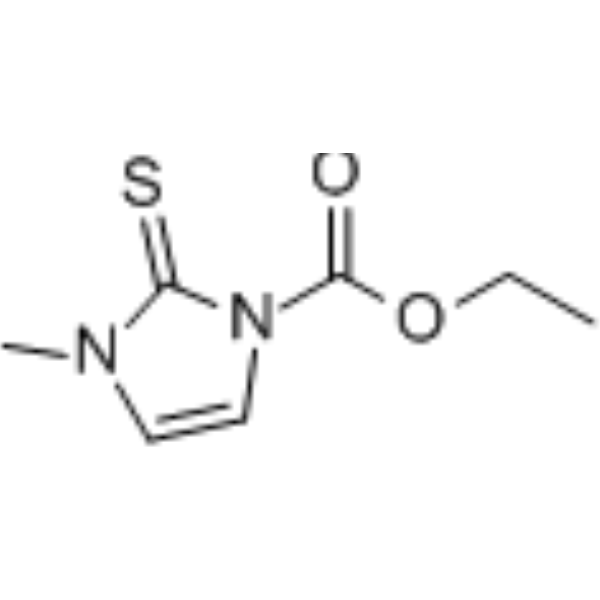
-
- HY-P3340
-
|
|
iGluR
|
Neurological Disease
|
|
Leptin (116-130) is a bioactive leptin fragment. Leptin (116-130) promotes AMPA receptor trafficking to synapses and facilitate activity-dependent hippocampal synaptic plasticity. Leptin (116-130) prevents hippocampal synaptic disruption and neuronal cell death in models of amyloid toxicity. Leptin (116-130) has the potential for the research of Alzheimer's disease (AD) .
|
-

-
- HY-W247131
-
|
|
Fluorescent Dye
|
Neurological Disease
|
|
DASPEI is a cationic styrenyl mitochondrial dye with large Stokes shift. DASPEI has excitation and emission wavelength at 550/573 nm, which has good light chromogenic property. DASPEI can stain mitochondria in living cells with good labeling property. And DASPEI can also be used to stain presynaptic nerve endings independently of neuronal activity .
|
-
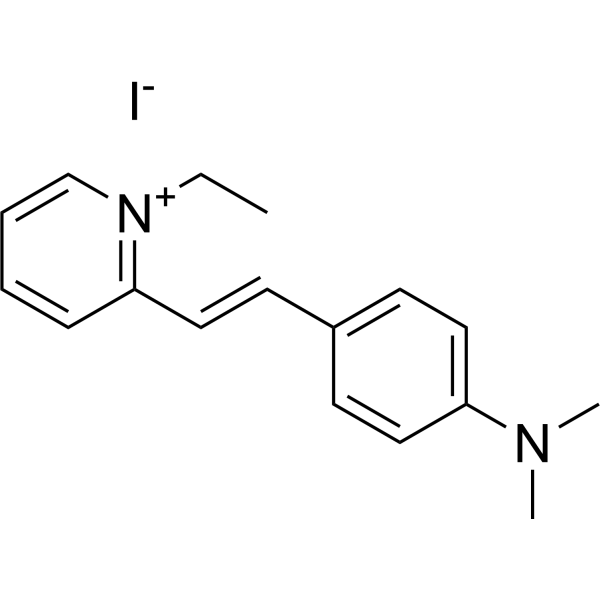
-
- HY-A0082
-
|
Difenidol hydrochloride
|
mAChR
Sodium Channel
|
Neurological Disease
|
|
Diphenidol hydrochloride (Difenidol hydrochloride) is a non-selective muscarinic M1-M4 receptor antagonist, has anti-arrhythmic activity. Diphenidol hydrochloride is also a potent non-specific blocker of voltage-gated ion channels (Na +, K +, and Ca 2+) in neuronal cells. Diphenidol hydrochloride can be used in the study of antivertigo and antinausea .
|
-

-
- HY-107670
-
|
DHβE hydrobromide
|
nAChR
|
Neurological Disease
|
|
Dihydro-β-erythroidine (DHβE) hydrobromide is a potent, orally active, and competitive antagonist of neuronal nAChRs. Dihydro-β-erythroidine hydrobromide shows selectivity for α4β4 and α4β2 nAChRs, with IC50s of 0.19 and 0.37 μM, respectively. Antidepressant-like activities .
|
-

-
- HY-A0270
-
|
|
mAChR
Sodium Channel
|
Neurological Disease
|
|
Diphenidol is a non-selective muscarinic M1-M4 receptor antagonist, has anti-arrhythmic activity. Diphenidol is also a potent non-specific blocker of voltage-gated ion channels (Na +, K +, and Ca 2+) in neuronal cells. Diphenidol can be used in the study of antivertigo and antinausea .
|
-

-
- HY-B0792
-
|
|
LRRK2
|
Neurological Disease
|
|
CZC-54252 is a potent and selective LRRK2 inhibitor with IC50s of 1.28 nM and 1.85 nM for wild-type and G2019S LRRK2, respectively. CZC-54252 attenuates G2019S LRRK2-induced human neuronal injury with an EC50 of ~1 nM. CZC-54252 has a neuroprotective activity .
|
-
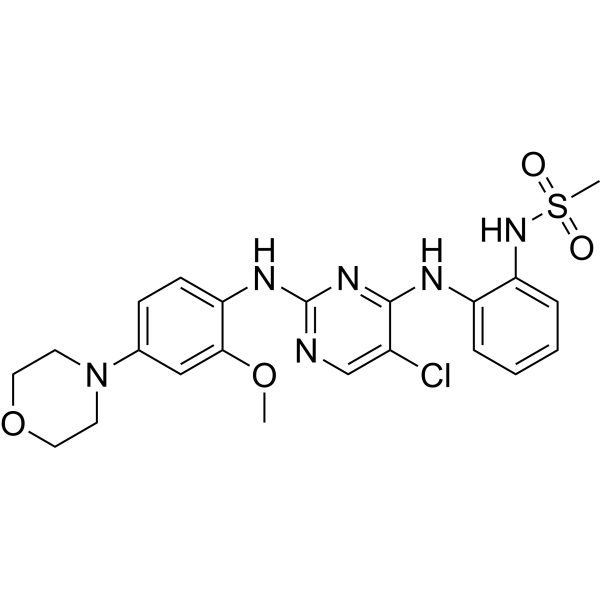
-
- HY-N5021
-
|
AHSYB
|
Others
|
Neurological Disease
|
|
Anhydrosafflor yellow B (AHSYB) is a quinochalcone C-glycoside isolated from Carthamus tinctorius. Anhydrosafflor yellow B inhibits ADP-induced platelet aggregation, exhibits significant anti-oxidative effects in vitro, and possesses certain activity against H2O2-induced cytotoxicity in cultured PC12 cells and primary neuronal cells .
|
-

-
- HY-B0228S
-
|
Adenine riboside-d1; D-Adenosine-d
|
Nucleoside Antimetabolite/Analog
Autophagy
Apoptosis
Endogenous Metabolite
|
Metabolic Disease
Cancer
|
|
Adenosine-d is the deuterium labeled Adenosine. Adenosine (Adenine riboside), a ubiquitous endogenous autacoid, acts through the enrollment of four G protein-coupled receptors: A1, A2A, A2B, and A3. Adenosine affects almost all aspects of cellular physiology, including neuronal activity, vascular function, platelet aggregation, and blood cell regulation[1][2].
|
-

-
- HY-N6967
-
|
(-)-α-Bisabolol
|
Apoptosis
|
Neurological Disease
Inflammation/Immunology
|
|
Levomenol ((-)-α-Bisabolol), a monocyclic sesquiterpene alcohol, exerts antioxidant, anti-inflammatory, and anti-apoptotic activities. Levomenol also has neuroprotective effects and prevents neuronal damage and memory deficits through reduction of proinflammatory markers induced by permanent focal cerebral ischemia in mice. Levomenol attenuates nociceptive behaviour and central sensitisation in a rodent model of trigeminal neuropathic pain. Orally active .
|
-

-
- HY-B0792A
-
|
|
LRRK2
|
Neurological Disease
|
|
CZC-54252 hydrochloride is a potent and selective LRRK2 inhibitor with IC50s of 1.28 nM and 1.85 nM for wild-type and G2019S LRRK2, respectively. G2019S LRRK2-induced human neuronal injury is attenuated by CZC-54252 hydrochloride with an EC50 of ~1 nM.CZC-54252 hydrochloride has a neuroprotective activity .
|
-
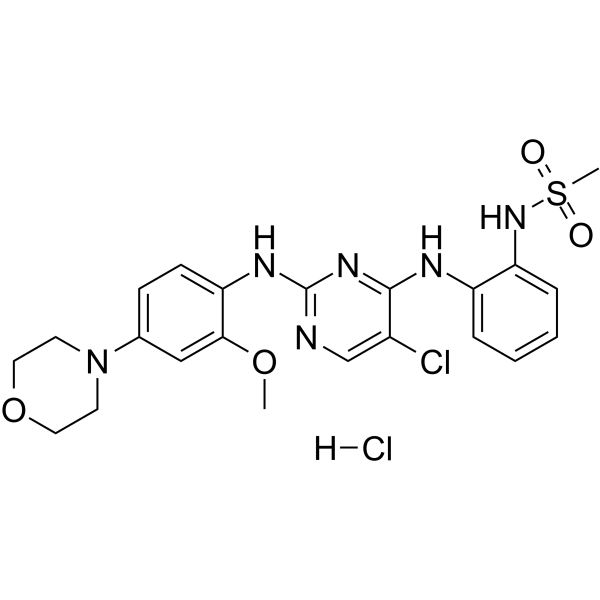
-
- HY-101446
-
|
|
|
|
|
HIOC is a potent and selective activator of TrkB (tropomyosin related kinase B) receptor. HIOC can pass the blood-brain and blood-retinal barriers.HIOC activates TrkB/ERK pathway and decreases neuronal cell apoptosis. HIOC attenuates early brain injury after SAH (subarachnoid hemorrhage). HIOC shows protective activity in an animal model for light-induced retinal degeneration .
|
-
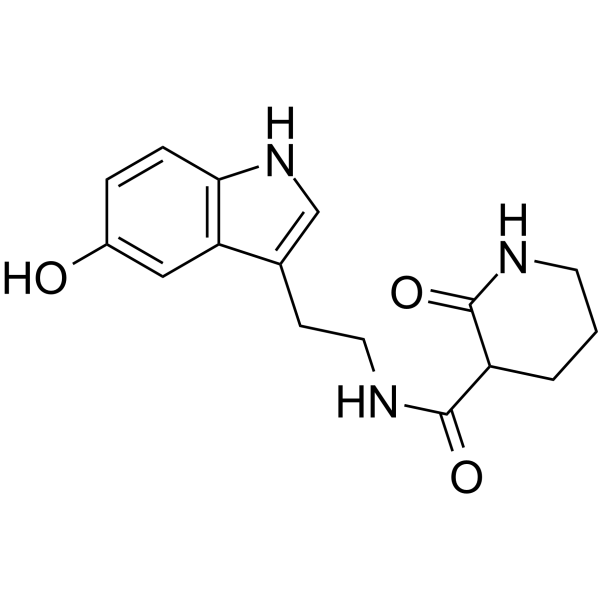
-
- HY-148792
-
|
PRAX-562
|
Sodium Channel
|
Neurological Disease
|
|
Relutrigine (PRAX-562) is an orally active inhibitor of persistent sodium channel. Relutrigine potently and preferentially inhibits persistent INa induced by ATX-II (Nav 1.5 activator) or the SCN8A mutation N1768D with IC50 values of 141 nM and 75 nM, respectively. Relutrigine exhibits potent use-dependent block and reduces neuronal intrinsic excitability. Relutrigine has effective anticonvulsant activity .
|
-

-
- HY-145842
-
|
|
Virus Protease
|
Infection
Neurological Disease
|
|
Encephalitic alphavirus-IN-1 has antiviral activity for VEEV and EEEV with EC50s of 0.24 μM and 0.16 μM, respectively. Encephalitic alphavirus-IN-1 has robust mouse plasma stability, and no obvious cytotoxicity .
|
-
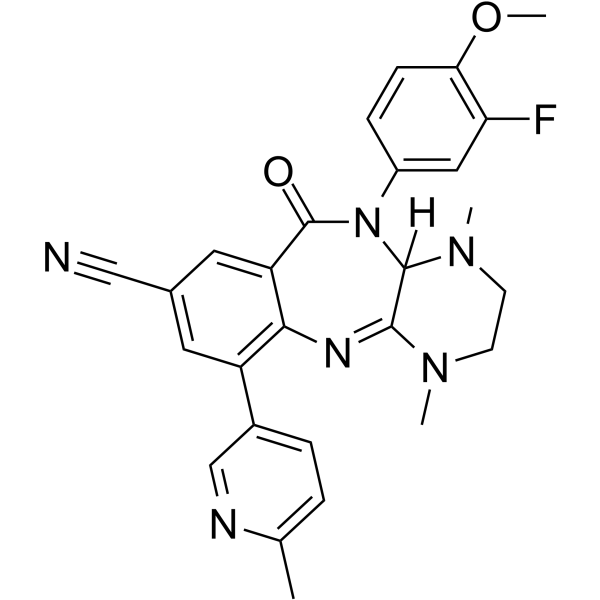
-
- HY-N4192
-
|
|
Others
|
Cardiovascular Disease
Cancer
|
|
Toringin, a bioflavonoid, is isolated from the bark of Docyniopsis tschonoski. Toringin progressively decreases not only the cis-effect of the expanded CTG repeats but cytotoxicity as well. Exposure to isosakuranetin, Toringin rescues PC12 neuronal cells. Flavonoids are efficacious for ameliorating the RNA gain of function caused by expanded CTG repeats, and have various biological activities and beneficial actions against cancers, coronary heart disease, among other pathologies .
|
-
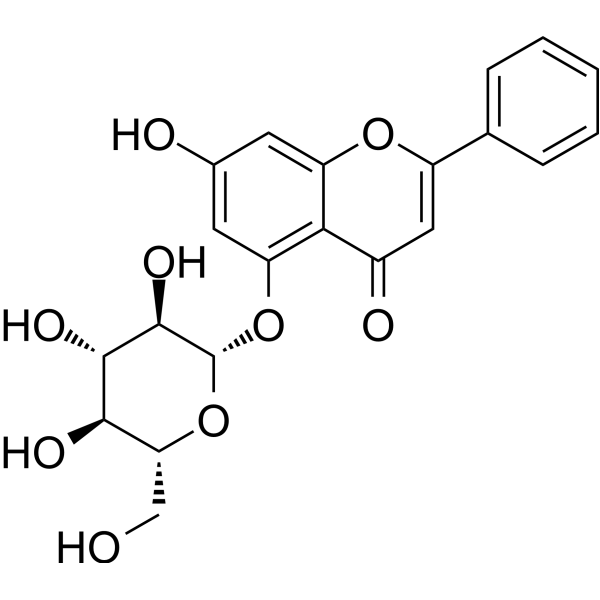
-
- HY-162347
-
|
|
Sodium Channel
|
Neurological Disease
|
|
Nav1.7-IN-13 (compound 3g) is a sodium channel inhibitor that significantly inhibits Veratridine (HY-N6691)-induced neuronal activity. Nav1.7-IN-13 inhibits total Na+ current in DRG neurons in a concentration-dependent manner; slows down the activation of Navs. Nav1.7-IN-13 significantly alleviated mechanical pain behavior in a rat model of nerve injury (SNI) and had analgesic activity .
|
-
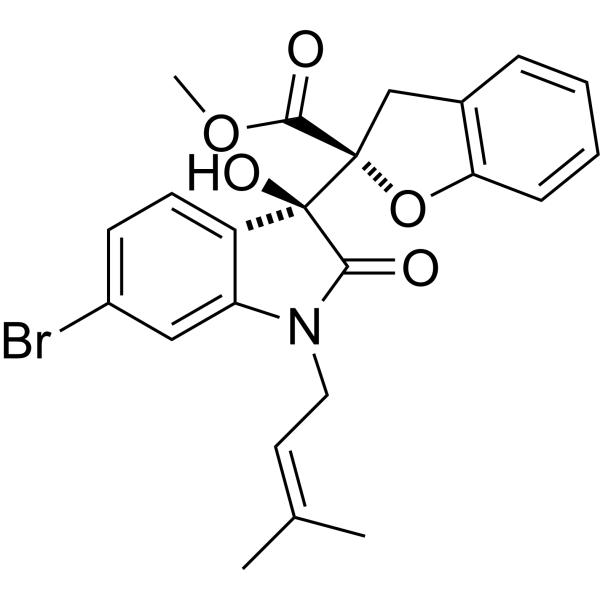
-
- HY-12390S
-
|
|
Isotope-Labeled Compounds
|
Neurological Disease
|
|
Lofepramine-d3 (Lopramine-d3) is the deuterium labeled Lofepramine. Lofepramine (Lopramine) is a potent tricyclic antidepressant and is extensively metabolised to Desipramine. The antidepressant activity of Lofepramine stems from the facilitation of noradrenergic neurotransmission by uptake inhibition. Lofepramine may also potentiate serotoninergic neurotransmission by inhibition of the neuronal uptake of serotonin and the enzyme tryptophan pyrrolase. Lofepramine has significant anxiolytic efficacy in addition to its antidepressant properties[1].
|
-
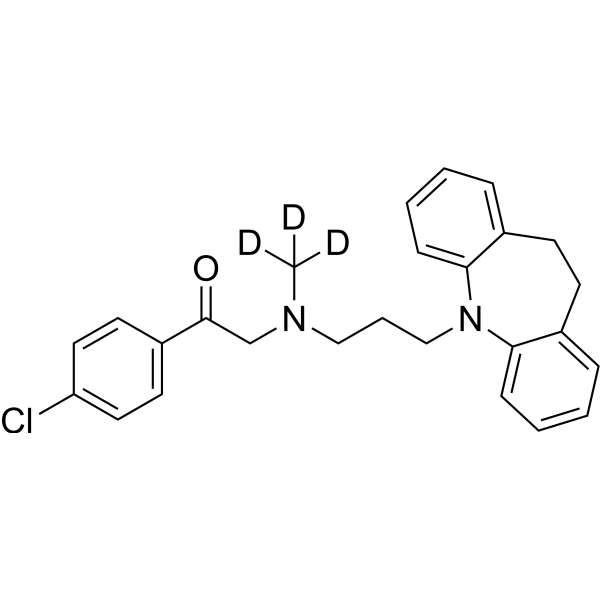
-
- HY-P1075
-
CALP3
1 Publications Verification
|
Calcium Channel
|
Neurological Disease
Cancer
|
|
CALP3, a Ca 2+-like peptide, is a potent Ca 2+ channel blocker that activates EF hand motifs of Ca 2+-binding proteins. CALP3 can functionally mimic increased [Ca 2+]i by modulating the activity of Calmodulin (CaM), Ca 2+ channels and pumps. CALP3 has the potential in controlling apoptosis in diseases such as AIDS or neuronal loss due to ischemia .
|
-
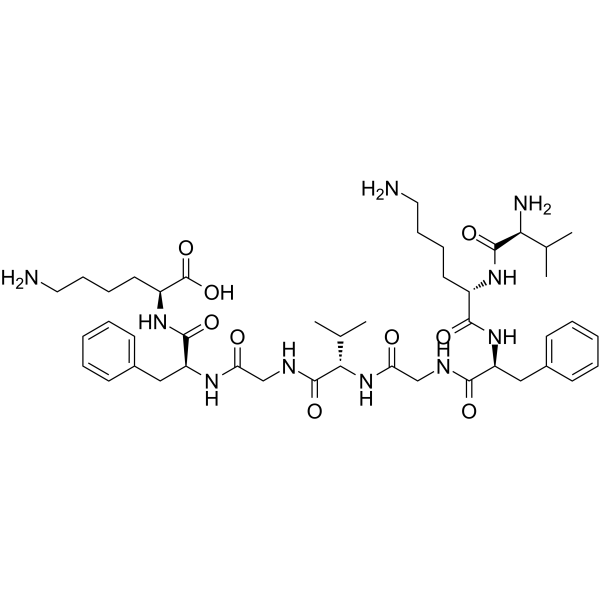
-
- HY-B0228S1
-
|
Adenine riboside-13C5; D-Adenosine-13C5
|
Apoptosis
Nucleoside Antimetabolite/Analog
Autophagy
Endogenous Metabolite
|
|
|
Adenosine- 13C5 is the 13C labeled Adenosine[1]. Adenosine (Adenine riboside), a ubiquitous endogenous autacoid, acts through the enrollment of four G protein-coupled receptors: A1, A2A, A2B, and A3. Adenosine affects almost all aspects of cellular physiology, including neuronal activity, vascular function, platelet aggregation, and blood cell regulation[2][3].
|
-

-
- HY-B0558R
-
|
|
p38 MAPK
|
Neurological Disease
Endocrinology
|
|
Carbimazole (Standard) is the analytical standard of Carbimazole. This product is intended for research and analytical applications. Carbimazole is an orally active antithyroid agent which rapidly converts to Methimazole after absorption and prevents thyroid peroxidase enzyme from iodinating and coupling the tyrosine residues on thyroglobulin, hence reducing the production of thyroxine. Carbimazole also displays anti-inflammatory and neuronal-protective activities, suggesting its application for hyperthyroidism and neurological research .
|
-
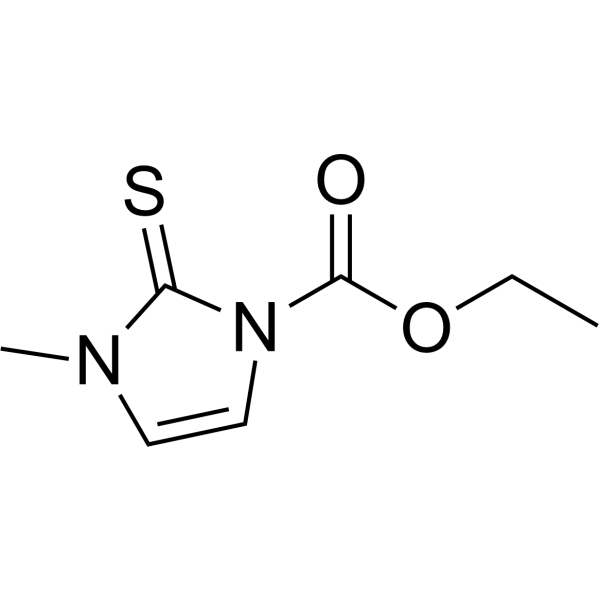
- HY-108584
-
|
BMS-204352
|
Potassium Channel
|
Neurological Disease
|
|
Flindokalner (BMS-204352) is a potassium channel modulator. Flindokalner is a positive modulator of all neuronal Kv7 channel subtypes expressed in HEK293 cells. Flindokalner is also a large conductance calcium-activated K channel (BKca) positive modulator. Flindokalner shows a negative modulatory activity at Kv7.1 channels (Ki=3.7 μM), and acts as a negative modulator of GABAA receptors. Flindokalner shows anxiolytic efficacy in vivo .
|
-

- HY-P1075A
-
|
|
Calcium Channel
|
Neurological Disease
Cancer
|
|
CALP3 TFA, a Ca 2+-like peptide, is a potent Ca 2+ channel blocker that activates EF hand motifs of Ca 2+-binding proteins. CALP3 TFA can functionally mimic increased [Ca 2+]i by modulating the activity of Calmodulin (CaM), Ca 2+ channels and pumps. CALP3 TFA has the potential in controlling apoptosis in diseases such as AIDS or neuronal loss due to ischemia .
|
-
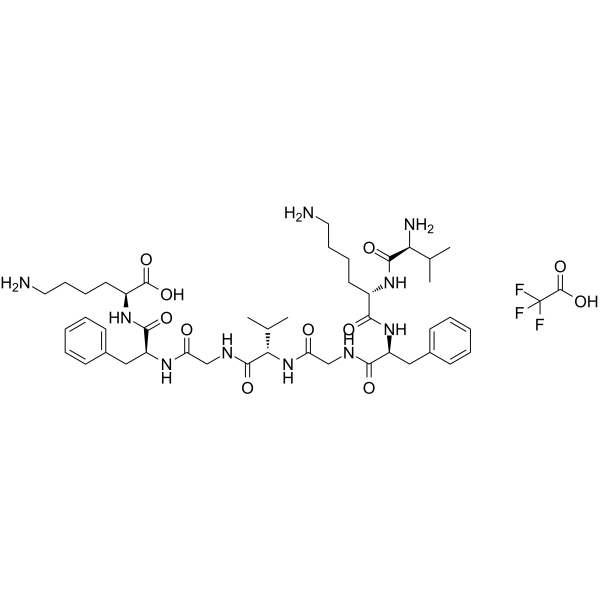
- HY-B0228S9
-
|
|
Apoptosis
Nucleoside Antimetabolite/Analog
Autophagy
Endogenous Metabolite
|
|
|
Adenosine- 13C10, 15N5 is the 13C and 15N labeled Adenosine[1]. Adenosine (Adenine riboside), a ubiquitous endogenous autacoid, acts through the enrollment of four G protein-coupled receptors: A1, A2A, A2B, and A3. Adenosine affects almost all aspects of cellular physiology, including neuronal activity, vascular function, platelet aggregation, and blood cell regulation[2][3].
|
-
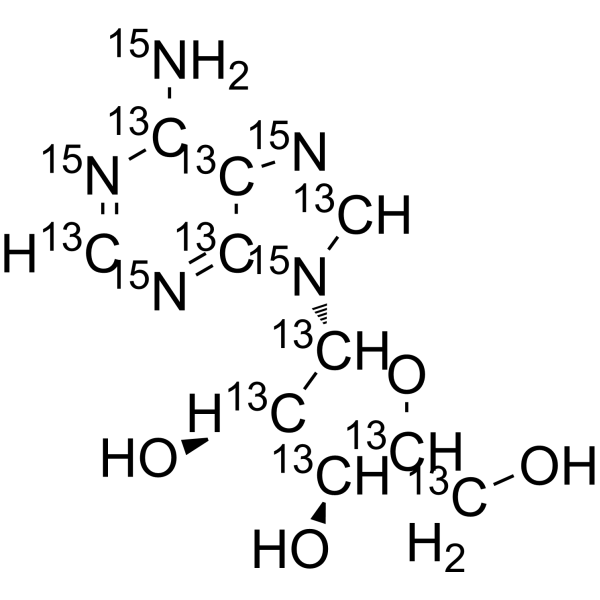
- HY-B0228S13
-
-

- HY-B0228S12
-
-

- HY-121833
-
|
|
Trk Receptor
Akt
ERK
|
Neurological Disease
Cancer
|
|
Gambogic amide is a potent and selective agonist of TrkA and also induces its tyrosine phosphorylation and activation of downstream signaling, including Akt and MAPK. Gambogic amide specifically interacts with the cytoplasmic juxtamembrane domain of the TrkA receptor and triggers its dimerization, leading to activation. Gambogic amide has neuroprotective activity preventing glutamate-induced neuronal cell death. Gambogic amide has improved efficacy in a transient middle cerebral artery occlusion model of stroke and could be used to study neurodegenerative diseases and stroke .
|
-

- HY-B0228S11
-
|
Adenine riboside-15N5; D-Adenosine-15N5
|
Isotope-Labeled Compounds
|
Cancer
|
|
Adenosine- 15N5 (Adenine riboside- 15N5; D-Adenosine- 15N5) is the 15N labled Adenosine (HY-B0228). Adenosine (Adenine riboside), a ubiquitous endogenous autacoid, acts through the enrollment of four G protein-coupled receptors: A1, A2A, A2B, and A3. Adenosine affects almost all aspects of cellular physiology, including neuronal activity, vascular function, platelet aggregation, and blood cell regulation .
|
-

- HY-163151
-
|
|
PI3K
Akt
p38 MAPK
|
Neurological Disease
Inflammation/Immunology
|
|
JE-133 is an optically active isochromane-2H-chromene conjugate. JE-133 exhibits antioxidant and anti-inflammatory activities. JE-133 is a neuroprotective agent that effectively inhibits neuronal oxidative damage associated with PI3K/Akt and MAPK signaling pathways. JE-133 can also inhibit lipopolysaccharide (LPS) (HY-D1056)-induced neuroinflammation by regulating JAK/STAT and Nrf2 signaling pathways .
|
-
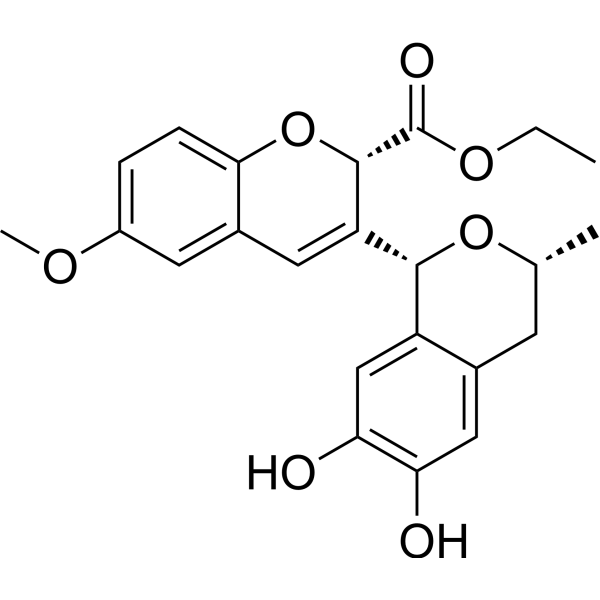
- HY-P99359
-
|
ABT-555; AE12-1Y-QL; Anti-RGMA Reference Antibody (elezanumab)
|
TGF-beta/Smad
|
Metabolic Disease
|
|
Elezanumab (ABT-555; AE12-1Y-QL) is a human monoclonal antibody that selectively targets repulsive guidance molecule A (RGMa). Elezanumab potently inhibited RGMa mediated BMP signalling via the SMAD1/5/8 pathway, with an IC50 around 97 pM. Elezanumab promotes neuroregeneration and neuroprotection in neuronal injury and demyelination models binds N-terminal RGMa, blocks BMP signaling and lacks RGMc cross-reactivity. elezanumab has neuroregenerative and neuroprotective activities without impact on iron metabolism .
|
-

- HY-P1845
-
|
|
ERK
EGFR
Reactive Oxygen Species
Calcium Channel
|
Neurological Disease
|
|
PACAP-38 (31-38), human, mouse, rat is a PAC1 receptor activator and increases the α-secretase activity. PACAP-38 (31-38), human, mouse, rat elevates cytosolic Ca 2+, increases proliferation and increases phosphorylation of extracellular regulates kinase (ERK) and the epidermal growth factor receptor (EGFR). PACAP-38 (31-38), human, mouse, rat demonstrates potent, efficacious, and sustained stimulatory effects on sympathetic neuronal NPY and catecholamine production. PACAP-38 (31-38), human, mouse, rat can be used for neurotrophic and neuroprotective research .
|
-
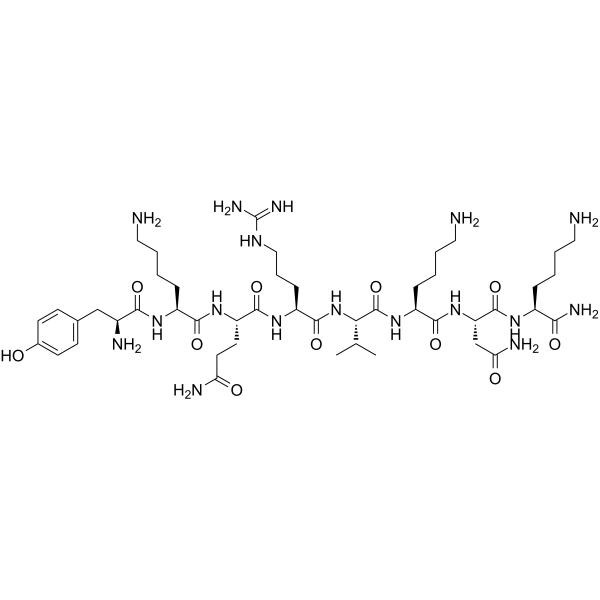
- HY-P1845A
-
|
|
ERK
EGFR
Reactive Oxygen Species
Calcium Channel
|
Neurological Disease
|
|
PACAP-38 (31-38), human, mouse, rat TFA is a PAC1 receptor activator and increases the α-secretase activity. PACAP-38 (31-38), human, mouse, rat TFA elevates cytosolic Ca 2+, increases proliferation and increases phosphorylation of extracellular regulates kinase (ERK) and the epidermal growth factor receptor (EGFR). PACAP-38 (31-38), human, mouse, rat TFA demonstrates potent, efficacious, and sustained stimulatory effects on sympathetic neuronal NPY and catecholamine production. PACAP-38 (31-38), human, mouse, rat TFA can be used for neurotrophic and neuroprotective research .
|
-

- HY-12379
-
|
|
Guanylate Cyclase
|
Inflammation/Immunology
|
|
NS-2028 is a highly selective soluble Guanylyl Cyclase (sGC) inhibitor with IC50 values of 30 nM and 200 nM for basal and NO-stimulated enzyme activity . NS-2028 inhibits soluble Guanylyl Cyclase activity in homogenates of mouse cerebellum and neuronal NO synthase with IC50 values of 17 nM and 20 nM . NS-2028 inhibits 3-morpholino-sydnonimine (SIN-1)-elicited formation of cyclic GMP in human cultured umbilical vein endothelial cells with an IC50 of 30 nM . NS-2028 is commonly used in the research of nitric oxide signaling pathways, it inhibits NO-dependent relaxant responses in non-vascular smooth muscle completely (1 μM) . NS-2028 reduces vascular endothelial growth factor-induced angiogenesis and permeability .
|
-
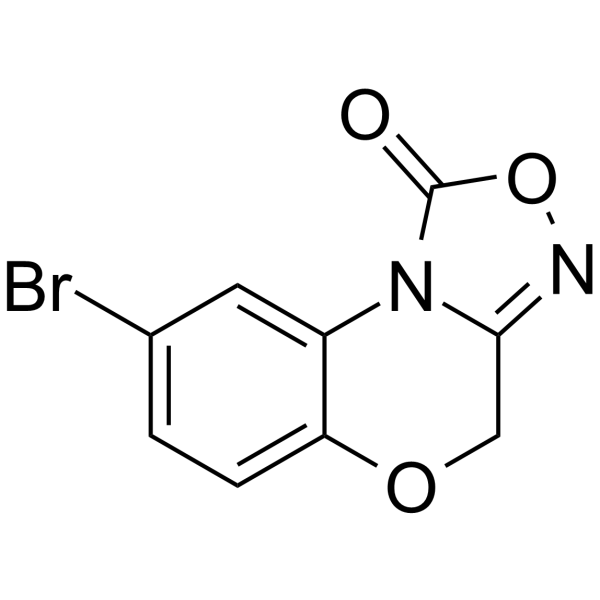
- HY-15310
-
Ivermectin
Maximum Cited Publications
18 Publications Verification
MK-933
|
Flavivirus
Dengue virus
Parasite
HIV
Mitophagy
HSV
SARS-CoV
Antibiotic
Autophagy
Bacterial
|
Infection
Cancer
|
|
Ivermectin (MK-933) is a broad-spectrum anti-parasite agent. Ivermectin (MK-933) is a specific inhibitor of Impα/β1-mediated nuclear import and has potent antiviral activity towards both HIV-1 and dengue virus. It is a positive allosteric effector of P2X4 and the α7 neuronal nicotinic acetylcholine receptor (nAChRs). Ivermectin also inhibits bovine herpesvirus1 (BoHV-1) replication and inhibits BoHV-1 DNA polymerase nuclear import . Ivermectin is a candidate therapeutic against SARS-CoV-2/COVID-19 .
|
-
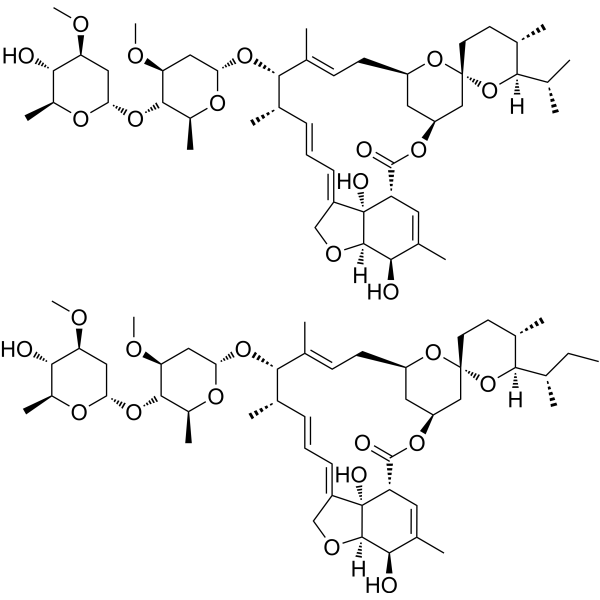
| Cat. No. |
Product Name |
Type |
-
- HY-D1427
-
|
|
Fluorescent Dyes/Probes
|
|
Di-2-ANEPEQ is a voltage sensitive membrane potential fluorescence dye. Di-2-ANEPEQ can be used for the evaluation of voltage-sensitive fluorescence dyes for monitoring neuronal activity in the embryonic central nervous system .
|
-
- HY-W247131
-
|
|
Fluorescent Dyes/Probes
|
|
DASPEI is a cationic styrenyl mitochondrial dye with large Stokes shift. DASPEI has excitation and emission wavelength at 550/573 nm, which has good light chromogenic property. DASPEI can stain mitochondria in living cells with good labeling property. And DASPEI can also be used to stain presynaptic nerve endings independently of neuronal activity .
|
| Cat. No. |
Product Name |
Target |
Research Area |
-
- HY-W014700
-
|
|
Cholinesterase (ChE)
|
Neurological Disease
|
|
Glycyl-L-glutamic acid is a neurotrophic factor (NF) in vivo, and exerts function of maintenance of AChE content and activity. Glycyl-L-glutamic acid doesn’t act directly on AChE synthesis, and may prevent preganglionic neuronal degeneration .
|
-
- HY-P1149
-
|
Epithalon; Epithalamin
|
Telomerase
|
Neurological Disease
Cancer
|
|
Epitalon is an anti-aging agent and a telomerase activator. Epitalon has an inhibitory effect of the on the development of spontaneous tumors in mice, has geroprotective actions and intranasal administration increases neuronal activity. Epitalon can be used for cancer, old age and Retinitis Pigmentosa .
|
-
- HY-P0303
-
|
|
Peptides
|
Cardiovascular Disease
Neurological Disease
|
|
Crustacean cardioactive peptide,free acid is a highly conserved, amidated cyclic nonapeptide, first isolated from the pericardial organs of the shore crab Carcinus maenas, where it has a role in regulating heartbeat; Crustacean cardioactive peptide,free acid also modulates the neuronal activity in other arthropods.
|
-
- HY-P5339
-
|
|
Peptides
|
Others
|
|
Humanin C8A-HN is a biological active peptide. (Protection activity of humanin (HN) against neuronal cell death is abrogated in this peptide, where Cys8 is substituted by Ala.)
|
-
- HY-P5883
-
|
tatM2NX
|
TRP Channel
|
Neurological Disease
|
|
TAT-M2NX (tatM2NX) is a TRPM2 inhibitor with specific neuroprotective activity in male mice. TAT-M2NX can be used to study ischemic neuronal damage .
|
-
- HY-P1149A
-
|
Epithalon TFA; Epithalamin TFA
|
Telomerase
|
Neurological Disease
Cancer
|
|
Epitalon TFA is an anti-aging agent and a telomerase activator. Epitalon TFA has an inhibitory effect of the on the development of spontaneous tumors in mice, has geroprotective actions and intranasal administration increases neuronal activity. Epitalon TFA can be used for cancer, old age and Retinitis Pigmentosa .
|
-
- HY-P1212
-
|
CST-14, human, rat
|
Somatostatin Receptor
|
Neurological Disease
|
|
Cortistatin 14, human, rat (CST-14, human, rat), a neuropeptide with neuronal depressant and sleep modulating properties, can bind to all five cloned somatostatin receptors (SSTRs) and ghrelin receptor to exert its biological activities and co-exists with GABA within the cortex and hippocampus .
|
-
- HY-P3340
-
|
|
iGluR
|
Neurological Disease
|
|
Leptin (116-130) is a bioactive leptin fragment. Leptin (116-130) promotes AMPA receptor trafficking to synapses and facilitate activity-dependent hippocampal synaptic plasticity. Leptin (116-130) prevents hippocampal synaptic disruption and neuronal cell death in models of amyloid toxicity. Leptin (116-130) has the potential for the research of Alzheimer's disease (AD) .
|
-
- HY-P1075
-
CALP3
1 Publications Verification
|
Calcium Channel
|
Neurological Disease
Cancer
|
|
CALP3, a Ca 2+-like peptide, is a potent Ca 2+ channel blocker that activates EF hand motifs of Ca 2+-binding proteins. CALP3 can functionally mimic increased [Ca 2+]i by modulating the activity of Calmodulin (CaM), Ca 2+ channels and pumps. CALP3 has the potential in controlling apoptosis in diseases such as AIDS or neuronal loss due to ischemia .
|
-
- HY-P1075A
-
|
|
Calcium Channel
|
Neurological Disease
Cancer
|
|
CALP3 TFA, a Ca 2+-like peptide, is a potent Ca 2+ channel blocker that activates EF hand motifs of Ca 2+-binding proteins. CALP3 TFA can functionally mimic increased [Ca 2+]i by modulating the activity of Calmodulin (CaM), Ca 2+ channels and pumps. CALP3 TFA has the potential in controlling apoptosis in diseases such as AIDS or neuronal loss due to ischemia .
|
-
- HY-P1845
-
|
|
ERK
EGFR
Reactive Oxygen Species
Calcium Channel
|
Neurological Disease
|
|
PACAP-38 (31-38), human, mouse, rat is a PAC1 receptor activator and increases the α-secretase activity. PACAP-38 (31-38), human, mouse, rat elevates cytosolic Ca 2+, increases proliferation and increases phosphorylation of extracellular regulates kinase (ERK) and the epidermal growth factor receptor (EGFR). PACAP-38 (31-38), human, mouse, rat demonstrates potent, efficacious, and sustained stimulatory effects on sympathetic neuronal NPY and catecholamine production. PACAP-38 (31-38), human, mouse, rat can be used for neurotrophic and neuroprotective research .
|
-
- HY-P1845A
-
|
|
ERK
EGFR
Reactive Oxygen Species
Calcium Channel
|
Neurological Disease
|
|
PACAP-38 (31-38), human, mouse, rat TFA is a PAC1 receptor activator and increases the α-secretase activity. PACAP-38 (31-38), human, mouse, rat TFA elevates cytosolic Ca 2+, increases proliferation and increases phosphorylation of extracellular regulates kinase (ERK) and the epidermal growth factor receptor (EGFR). PACAP-38 (31-38), human, mouse, rat TFA demonstrates potent, efficacious, and sustained stimulatory effects on sympathetic neuronal NPY and catecholamine production. PACAP-38 (31-38), human, mouse, rat TFA can be used for neurotrophic and neuroprotective research .
|
| Cat. No. |
Product Name |
Target |
Research Area |
-
- HY-P99407
-
|
VX 15/2503
|
Inhibitory Antibodies
|
Neurological Disease
|
|
Pepinemab (VX 15/2503) is a human monoclonal antibody against SEMA4D, a signalling protein 4D (SEMA4D), also known as CD100, which is a regulator of neuronal development and plays a role in a variety of cellular processes. Pepinemab can be used in the study of various neurodegenerative diseases such as Alzheimer's disease by blocking the activity of SEMA4D .
|
-
- HY-P99359
-
|
ABT-555; AE12-1Y-QL; Anti-RGMA Reference Antibody (elezanumab)
|
TGF-beta/Smad
|
Metabolic Disease
|
|
Elezanumab (ABT-555; AE12-1Y-QL) is a human monoclonal antibody that selectively targets repulsive guidance molecule A (RGMa). Elezanumab potently inhibited RGMa mediated BMP signalling via the SMAD1/5/8 pathway, with an IC50 around 97 pM. Elezanumab promotes neuroregeneration and neuroprotection in neuronal injury and demyelination models binds N-terminal RGMa, blocks BMP signaling and lacks RGMc cross-reactivity. elezanumab has neuroregenerative and neuroprotective activities without impact on iron metabolism .
|
| Cat. No. |
Product Name |
Category |
Target |
Chemical Structure |
| Cat. No. |
Product Name |
Chemical Structure |
-
- HY-13694S
-
|
|
|
Methionine-d3 is the deuterium labeled Methionine. Methionine (MRX-1024; D-Methionine) is an effective chemoprotective agent which can also inhibit the neuronal activity through GABAA receptor activation.
|
-

-
- HY-13694S1
-
|
|
|
Methionine-d4 is the deuterium labeled Methionine. Methionine (MRX-1024; D-Methionine) is an effective chemoprotective agent which can also inhibit the neuronal activity through GABAA receptor activation.
|
-

-
- HY-118645S
-
|
|
|
1'-Hydroxymidazolam-d4 is the deuterium labeled 1'-Hydroxymidazolam. 1'-Hydroxymidazolam is a primary active metabolite of Midazolam, and it is a neuronal depressant agent. 1'-Hydroxymidazolam could inhibit neuronal activity add to the effects of Midazolam[1][2].
|
-

-
- HY-118645S3
-
|
|
|
1'-Hydroxymidazolam- 13C6 is 13C- and 15N-labeled 1'-Hydroxymidazolam (HY-118645). 1'-Hydroxymidazolam is a primary active metabolite of Midazolam, and it is a neuronal depressant agent. 1'-Hydroxymidazolam could inhibit neuronal activity add to the effects of Midazolam .
|
-

-
- HY-B0228S
-
|
|
|
Adenosine-d is the deuterium labeled Adenosine. Adenosine (Adenine riboside), a ubiquitous endogenous autacoid, acts through the enrollment of four G protein-coupled receptors: A1, A2A, A2B, and A3. Adenosine affects almost all aspects of cellular physiology, including neuronal activity, vascular function, platelet aggregation, and blood cell regulation[1][2].
|
-

-
- HY-12390S
-
|
|
|
Lofepramine-d3 (Lopramine-d3) is the deuterium labeled Lofepramine. Lofepramine (Lopramine) is a potent tricyclic antidepressant and is extensively metabolised to Desipramine. The antidepressant activity of Lofepramine stems from the facilitation of noradrenergic neurotransmission by uptake inhibition. Lofepramine may also potentiate serotoninergic neurotransmission by inhibition of the neuronal uptake of serotonin and the enzyme tryptophan pyrrolase. Lofepramine has significant anxiolytic efficacy in addition to its antidepressant properties[1].
|
-

-
- HY-B0228S1
-
|
|
|
Adenosine- 13C5 is the 13C labeled Adenosine[1]. Adenosine (Adenine riboside), a ubiquitous endogenous autacoid, acts through the enrollment of four G protein-coupled receptors: A1, A2A, A2B, and A3. Adenosine affects almost all aspects of cellular physiology, including neuronal activity, vascular function, platelet aggregation, and blood cell regulation[2][3].
|
-

-
- HY-B0228S9
-
|
|
|
Adenosine- 13C10, 15N5 is the 13C and 15N labeled Adenosine[1]. Adenosine (Adenine riboside), a ubiquitous endogenous autacoid, acts through the enrollment of four G protein-coupled receptors: A1, A2A, A2B, and A3. Adenosine affects almost all aspects of cellular physiology, including neuronal activity, vascular function, platelet aggregation, and blood cell regulation[2][3].
|
-

-
- HY-B0228S13
-
|
|
|
Adenosine- 13C10 (Adenine riboside- 13C10; D-Adenosine- 13C10) is 13C-labeled Adenosine (HY-B0228). Adenosine (Adenine riboside), a ubiquitous endogenous autacoid, acts through the enrollment of four G protein-coupled receptors: A1, A2A, A2B, and A3. Adenosine affects almost all aspects of cellular physiology, including neuronal activity, vascular function, platelet aggregation, and blood cell regulation.
|
-

-
- HY-B0228S12
-
|
|
|
Adenosine-d13 (Adenine riboside-d13; D-Adenosine-d13) is deuterium labeled Adenosine (HY-B0228). Adenosine (Adenine riboside), a ubiquitous endogenous autacoid, acts through the enrollment of four G protein-coupled receptors: A1, A2A, A2B, and A3. Adenosine affects almost all aspects of cellular physiology, including neuronal activity, vascular function, platelet aggregation, and blood cell regulation.
|
-

-
- HY-B0228S11
-
|
|
|
Adenosine- 15N5 (Adenine riboside- 15N5; D-Adenosine- 15N5) is the 15N labled Adenosine (HY-B0228). Adenosine (Adenine riboside), a ubiquitous endogenous autacoid, acts through the enrollment of four G protein-coupled receptors: A1, A2A, A2B, and A3. Adenosine affects almost all aspects of cellular physiology, including neuronal activity, vascular function, platelet aggregation, and blood cell regulation .
|
-

Your information is safe with us. * Required Fields.
Inquiry Information
- Product Name:
- Cat. No.:
- Quantity:
- MCE Japan Authorized Agent:





































































